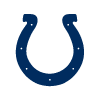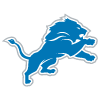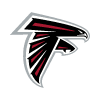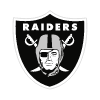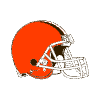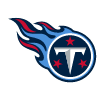2021 NFL triplets: Packers, Bills climb; Falcons plummet
Football is a battle of 11 on 11, but as the highlight reels will tell you, it’s often about the stars.
The modern game relies on the abilities of the quarterback, lead running back and top pass-catcher, so we’re back with another year of rankings of the league’s best (and worst) triplets.
To complete this exercise, I’ve followed a procedure established by Ali Bhanpuri, our senior director of content and editorial, which weighs rankings of players in each of the three categories. I ordered quarterbacks by two key criteria:
I ranked each quarterback 1-32 with a points system (32 for No. 1, all the way down to 1 for No. 32) in each of the two categories, then multiplied them by 1.5 to accurately represent the importance of the position to each team. As we all know, you live and die with your quarterback.
I ordered each team’s top player at running back and pass-catcher (allowing tight ends to join the party), then combined the scores to see who had the best triplets.
We have a change at the top from 2020 — and plenty of explanation for the rest of the rankings. Let’s dive into all 32 teams’ triplets for 2021.
NOTE: Up-down arrows reflect changes from the 2020 edition of the triplet rankings.
Quarterback: Mac Jones — Rank: 30 (One game: 30 | 2021 prod.: 30)
Running back: Damien Harris — Rank: 29
Pass catcher: Nelson Agholor — Rank: 30
Don’t all reach for your muskets at once, Patriots fans. As Bill Belichick has long demonstrated, a football team is the sum of its parts, not just its top stars. Unfortunately for New England, its approach this offseason (upgrade at tight end first, then receiver) doesn’t stand up well in exercises like this triplets ranking. It’s tough to pick which of the two new TEs (Hunter Henry and Jonnu Smith) will be the team’s top pass-catcher, and while the savvy addition of Agholor could pay off immediately, he still sits at No. 30. The running back room is deep but lacks a clear-cut leader (side note: I love rookie Rhamondre Stevenson). Cutting Cam Newton further muddied the projection here. Ultimately, it comes down to whether Jones can carry his positive preseason momentum into the regular season.
Related Links
- Giants RB Saquon Barkley (knee) close to being fully cleared for Week 1 vs. Broncos
- Why the 49ers SHOULD utilize a two-quarterback system; Jameis Winston's potential on the Saints
- 2011 NFL Draft class worthy of greater appreciation a decade after entering league
- Dolphins QB Tua Tagovailoa: Brian Flores' support 'means a lot'
- Bears general manager Ryan Pace: There's no need for us to rush Justin Fields
- 2021 NFL playoff predictions: Who will win hotly contested AFC North, NFC West?
Quarterback: Tyrod Taylor — Rank: 32 (One game: 32 | 2021 prod.: 32)
Running back: David Johnson — Rank: 32
Pass catcher: Brandin Cooks — Rank: 20
If you need an example of a quarterback’s value in today’s NFL, here’s one: Were we able to include Deshaun Watson at quarterback, he alone would’ve carried the Texans somewhere near the top 15. Instead, it’s Taylor, a veteran game-manager with a low ceiling. Johnson’s maximum potential at RB is even lower. The only strong member of Houston’s triplets is Cooks, who quietly racked up 1,150 receiving yards and six scores in what the since-departed J.J. Watt called a “wasted” season. Our expectations for the Texans are low, so it’s no surprise they landed here.
Quarterback: Jalen Hurts — Rank: 31 (One game: 31 | 2021 prod.: 31)
Running back: Miles Sanders — Rank: 18
Pass catcher: Devonta Smith — Rank: 27
Hurts is a bit of an unknown, playing under his second head coach in as many seasons. While I wouldn’t at all be surprised if he was better than this standing, there’s too much uncertainty to project him any higher at this point. We know more about Sanders, whose four-game absence last year didn’t hurt his statistical output. A full season in an offense that isn’t crumbling because of QB issues should help him improve on his totals — though again, his ranking better reflects his potential than it does his reality. Smith didn’t win the Heisman Trophy on pure luck, but the rookie (who already missed time this preseason due to injury) ranks low because we don’t have any proof of his skills at the pro level. That can change rather quickly.
Quarterback: Zach Wilson — Rank: 26 (One game: 28 | 2021 prod.: 22)
Running back: Tevin Coleman — Rank: 31
Pass catcher: Corey Davis — Rank: 28
I’m not chasing the hype train at this point, but I certainly liked what I saw out of Wilson in the preseason. Like Joe Burrow a year earlier, Wilson looked comfortable, decisive and accurate in his limited preseason action. New York has surrounded him with a pass-catching cast that should be able to do some damage collectively, which helps explain our low ranking for Davis. The former first-rounder has had one good season (a career-high 984 receiving yards in 2020) and might not see a massive amount of targets, but he could also flourish with defenses playing slightly less attention to him. The Jets’ potential will ride on the arm of Wilson, though, as Coleman (who hasn’t played a full season since 2018) is the best the Jets can trot out in the backfield.
Quarterback: Teddy Bridgewater — Rank: 28 (One game: 29 | 2021 prod.: 27)
Running back: Melvin Gordon — Rank: 23
Pass catcher: Courtland Sutton — Rank: 18
Compared to Drew Lock, Bridgewater is the safe choice at QB for a coach seeking security, but Bridgewater doesn’t exactly raise Denver’s ceiling, and his ranking here reflects this reality. Bridgewater was more efficient than Lock last season (posting a completion percentage nearly 12 points higher and a passer rating over 16 points higher), and he was among the league’s best on passes fewer than 10 air yards (ranking second on such throws with a completion percentage of 82.7, per Next Gen Stats). That’s comfortable but not exciting, and he could waste a talented receiving corps. Sutton, who missed all but one game last season due to a torn ACL, led Denver in receiving yards in 2019 (1,112). If he can return to form, he’ll justify his ranking. Gordon is the lead back for now, but I have a feeling he’ll be threatened by draft darling Javonte Williams, who could end up proving to be an upgrade. The Broncos are young and have plenty of potential. Now it’s time to capitalize.
Quarterback: Carson Wentz — Rank: 27 (One game: 23 | 2021 prod.: 28)
Running back: Jonathan Taylor — Rank: 11
Pass catcher: T.Y. Hilton — Rank: 30
If Wentz still has some of the magic that once saw him reach legitimate MVP contention in Philly, his ranking could change. For now, though, his latest performance is his most important, and his dreadful final Eagles campaign in 2020 was not encouraging. What is exciting for Indianapolis is the return of late-season star Taylor. We love Taylor’s potential because of how he broke out down the stretch in 2020, finishing with the best marks among rookie running backs in rushing yards (1,169), scrimmage yards (1,468) and scrimmage touchdowns (12). Now it’s about building on that strong start. Hilton is set to miss time after being placed on IR last week with a neck injury, but he’s likely still Indianapolis’ most notable pass catcher, unless Parris Campbell can stay on the field long enough to improve in his third professional season. For now, this group is carried by Taylor.
Quarterback: Tua Tagovailoa — Rank: 25 (One game: 24 | 2021 prod.: 25)
Running back: Myles Gaskin — Rank: 25
Pass catcher: DeVante Parker — Rank: 19
Year 2 might seem too early to judge Tagovailoa, but with the Dolphins expecting to compete immediately, the QB must be better statistically than he was as a rookie in 2020, when he finished 26th or worse in all significant passing metrics but one: touchdown-to-interception ratio (11:5). If he brings his other marks up, Tagovailoa will rise in our rankings. Gaskin ranked 11th in scrimmage yards per game in 2020 with 97.2 but missed six games. Parker returns as Miami’s top pass catcher after slipping statistically, going from a 1,200-yard 2019 season to less than 800 yards in 2020 while catching passes from two different quarterbacks. Jaylen Waddle’s addition is promising and could free up Parker for more opportunities, but Parker has a lucrative contract to live up to. Getting on the same page as Tagovailoa would be a good place to start.
Quarterback: Trevor Lawrence — Rank: 24 (One game: 25 | 2021 prod.: 23)
Running back: James Robinson — Rank: 17
Pass catcher: D.J. Chark — Rank: 26
Lawrence is another rookie we don’t know all that much about yet, but his final preseason outing was extremely encouraging. Granted, it came against Dallas’ second-team defenders, but Lawrence appeared to make his first significant progress, looking sharp and in control. He’s the No. 1 pick for a reason, and his biggest hurdle will likely be avoiding pressure. If he has time to throw, I expect Lawrence to live up to expectations in his first season. Robinson is again the lead back following a significant injury to Travis Etienne, and while he doesn’t command instant name recognition, it’s tough to overlook his 1,414 scrimmage yards last season — the most by an undrafted rookie in the common draft era. Chark, meanwhile, led the Jaguars with 706 receiving yards, the third-fewest for a team leader in the NFL last season. He should improve with Lawrence now throwing to him.
Quarterback: Jared Goff — Rank: 18 (One game: 18 | 2021 prod.: 19)
Running back: D’Andre Swift — Rank: 26
Pass catcher: Tyrell Williams — Rank: 32
The drop-off from Matthew Stafford to Goff isn’t as steep as some believe. Goff’s numbers (a passer rating of 91.5, a touchdown-to-interception ratio of 107:55, a completion percentage of 63.4 and a passing yards average of 263.4 per game) since he entered the NFL in 2016 are comparable to Stafford’s in that span. The difference is in supporting cast; as you can see above, Goff won’t quite have superstars by his side in Detroit. Swift’s ranking is down because of a likely dip in carries as he shares the backfield with Jamaal Williams. Tyrell Williams didn’t play in 2020. He owns a 1,000-yard season in his career with the Chargers and a few big moments with the Raiders, but he just hasn’t been consistent. That could change with Goff — or the position of top pass catcher could be promising tight end T.J. Hockenson’s spot to claim a year from now.
Quarterback: Justin Fields — Rank: 29 (One game: 27 | 2021 prod.: 29)
Running back: David Montgomery — Rank: 12
Pass catcher: Allen Robinson — Rank: 8
Entering Week 1, it’s still Andy Dalton’s time, but we expect Fields — who has the physical ability to overcome a leaky offensive line and make plays — to take over before the midway point of the season. Fields’ biggest hurdle will be making faster decisions, something with which he struggled in his final games at Ohio State. The rookie is capable of putting together an excellent game; we just don’t yet know if he can sustain it over a season. Montgomery led the Bears in carries (247), rushing yards (1,070), rushing TDs (eight), scrimmage yards (1,508) and scrimmage TDs (10) last season. The franchise-tagged Robinson is clearly worth a long-term deal; his 102 receptions ranked sixth in the NFL in 2020, and it’s tough to argue with the numbers he put up (1,250 yards and six receiving touchdowns) while catching passes from both Mitchell Trubisky and Nick Foles. He’s one 1,000-yard season away from becoming the first Bears receiver to record three straight such campaigns in team history. He deserves to be paid.
Quarterback: Jimmy Garoppolo — Rank: T-21 (One game: 20 | 2021 prod.: 26)
Running back: Raheem Mostert — Rank: 20
Pass catcher: George Kittle — Rank: 13
Garoppolo’s been good enough to help the 49ers reach the Super Bowl — he just needs to be healthy. An inability to stay on the field has weighed down Garoppolo’s standing among NFL quarterbacks, and he also has Trey Lance nipping at his heels. San Francisco could be lethal by using both quarterbacks strategically, but since we’re judging each of these signal-callers by the same criteria, we give Garoppolo a slight edge in terms of season-long production. Kittle was a top tight end in 2019 before his own health issues got in his way in 2020. At full strength, Kittle is a monster and rightfully ranks above plenty of productive receivers. Mostert can be a big-play beast, too; since 2019, he’s led the NFL in yards per carry (5.4). Like Garoppolo and Kittle, though, Mostert missed substantial time (eight games) due to injury last season.
Quarterback: Sam Darnold — Rank: T-21 (One game: 26 | 2021 prod.: 21)
Running back: Christian McCaffrey — Rank: 4
Pass catcher: D.J. Moore — Rank: 22
After coordinator Joe Brady’s offense produced two 1,000-yard receivers (Moore and Robby Anderson) with Teddy Bridgewater under center in 2020, Carolina decided to start a reclamation project with Darnold, the former No. 3 overall pick. Early returns suggest (predictably) putting the attack in Darnold’s hands might not be the best idea. But Comeback Player of the Year candidate McCaffrey’s career production — he’s racked up the most scrimmage yards per game (135.2) in the NFL since 2018 — doesn’t lie. He just needs to prove he’s healthy enough to regain the form that made him a dynamic threat to every opposing defense. Moore edged Anderson as Carolina’s lead receiver last season but ranks 22nd because the Panthers are at their best when they aren’t relying solely on him.
Quarterback: Daniel Jones — Rank: 20 (One game: 21 | 2021 prod.: 20)
Running back: Saquon Barkley — Rank: 7
Pass catcher: Kenny Golladay — Rank: 24
The Giants are entering a pivotal third year for Jones. To this point, he’s certainly flashed his potential, but he’s yet to prove he can consistently produce. One issue: Jones’ nagging tendency to turn the ball over. He’s given away possession 39 times since entering the league in 2019, the most in the NFL, including 29 fumbles and 17 fumbles lost. Barkley’s anticipated return should help with this, though he has his own point to prove as he nears a contract season after missing nearly all of 2020 with an ACL injury. New arrival Golladay can help but hasn’t hit the ground running, due to a hamstring injury that robbed him of much of training camp.
Quarterback: Ryan Fitzpatrick — Rank: T-18 (One game: 19 | 2021 prod.: 18)
Running back: Antonio Gibson — Rank: 19
Pass catcher: Terry McLaurin — Rank: 12
Fitzpatrick’s penchant for heroics landed him 19th in one-game rankings, while his production was better than anyone Washington trotted out last season. While he ranks outside of the top 15 in most metrics since 2019, we also have to remember his career hasn’t exactly included necessary organizational stability. So if he’s an upgrade over whatever Washington had last season, it’s fair to see the Football Team contending for a second straight postseason berth. I expect Gibson — one of my favorite young backs — to take a significant step forward in Year 2. McLaurin has proven himself to be a legitimate No. 1 receiver, accounting for the highest percentage of team production when compared with other receivers drafted in his class with 2,000-plus career receiving yards (DK Metcalf, A.J. Brown). Add former Ohio State teammate Curtis Samuel to the mix, and you’ve got the makings of a player who certainly belongs in the upper half of NFL receivers.
Quarterback: Matt Ryan — Rank: 13 (One game: 13 | 2021 prod.: 13)
Running back: Mike Davis — Rank: 30
Pass catcher: Calvin Ridley — Rank: 15
New coach Arthur Smith has a chance to be the Matt LaFleur to Ryan’s Aaron Rodgers by reversing the slide Ryan’s been on since winning MVP in 2016. The 36-year-old Ryan doesn’t have the playmakers Rodgers was afforded in Green Bay back in 2019, but he does have Ridley, the new No. 1 receiver following the trade of Julio Jones to Tennessee. Ridley finished third among all receivers in yards per game last season, and those questioning Ridley’s capability to produce without Jones on the field should know Ridley was significantly better without Jones in 2020, catching 7.1 passes per game and averaging 109.3 receiving yards per game. Add in rookie tight end Kyle Pitts, and the future doesn’t seem so bleak after all. The running game, however, will probably underwhelm for a third straight season. We had no choice but to place Davis — owner of a single-season high of just 642 rushing yards — among the bottom three backs in the league.
Quarterback: Ben Roethlisberger — Rank: T-14 (One game: 15 | 2021 prod.: 14)
Running back: Najee Harris — Rank: 15
Pass catcher: JuJu Smith-Schuster — Rank: 25
Roethlisberger’s sudden decline last season played a big role in Pittsburgh’s downfall in 2020, leading to an offseason of questions about what the team has left in its QB1. The Steelers had plenty of problems with their offensive balance because of an ineffective rushing attack, and instead of trying to solve that by spending their first-round pick on an offensive lineman, they put their hopes on Harris. If he has room to run, his athletic ability should translate to an effective rookie campaign, but he’ll need Pittsburgh’s revamped line to jell. The Steelers have a trio of effective receivers in Smith-Schuster, Chase Claypool and Diontae Johnson, but they lack a clear No. 1 pass-catcher. We’ll designate Smith-Schuster as such, though we don’t see DK Metcalf levels of production coming from him.
Quarterback: Joe Burrow — Rank: 17 (One game: 17 | 2021 prod.: 17)
Running back: Joe Mixon — Rank: 9
Pass catcher: Ja’Marr Chase — Rank: 23
The Bengals relied on Burrow heavily — he registered the most pass attempts per game ever for a rookie (40.4) — and ultimately didn’t protect him well enough. Will he show any hesitancy in regular-season action as he returns from an ACL tear? Cincinnati would be wise to help him out by handing it to Mixon, who racked up over 1,400 scrimmage yards in both 2018 and 2019 before a foot injury shortened his 2020 campaign. The reunion of Burrow and Chase — who starred together at LSU — makes a football fan salivate, but the rookie receiver’s preseason struggles have tempered expectations. We’ll see if Chase can figure things out and again become the go-to target for Burrow.
Quarterback: Jameis Winston — Rank: T-21 (One game: 22 | 2021 prod.: 24)
Running back: Alvin Kamara — Rank: 2
Pass catcher: Michael Thomas — Rank: 10
A new era begins in New Orleans with Jameis Winston as the triumphant winner of a quarterback competition that promised to deliver a lower ceiling no matter the victor. Don’t tell Saints fans that, though, especially those still running back the replay of Marquez Callaway’s fantastic touchdown grab in a preseason win over the Jaguars. Look, Winston was the No. 1 overall pick in 2015 for a reason. He never panned out in Tampa, but given a second chance, Winston could turn things around. The unquestionably elite Kamara stands as a legitimate threat to slice through defenses on the ground or through the air, setting single-season Saints records in rushing touchdowns (16) and scrimmage touchdowns (21) last season. Winston will need to lean on Kamara to get comfortable, especially with Thomas (who ranks second in the NFL in touches and third in receiving yards, and is tied for 16th in receiving TDs, since 2017) expected to miss time due to a lingering ankle issue.
Quarterback: Matthew Stafford — Rank: T-9 (One game: 9 | 2021 prod.: 11)
Running back: Sony Michel — Rank: 27
Pass catcher: Robert Woods — Rank: 21
Michel isn’t exactly a dynamite replacement for Cam Akers, whose loss was a real blow. But why start with the bad news when there’s been so much good news for the Rams this offseason? Stafford is an instant upgrade under center; his passer rating since 2019 is 11.7 points higher than predecessor Jared Goff’s, and that figure looks even better when considering the offensive weapons Stafford was working with in Detroit. I’m not saying Stafford will have a Tom Brady-like effect on the Rams in 2021, but he should seamlessly fit into Sean McVay’s plans. Woods has quietly been the Rams’ best pass-catcher in recent seasons. He’s not quite a stat-sheet stuffer, so he doesn’t make his way into the top 20 in my WR rankings, but it wouldn’t be surprising if we saw him post 1,000-plus yards again (he fell just short of a third consecutive 1,000-yard season in 2020) with Stafford now on the team. And Michel was performing like a quality back before injuries got in his way last season.
Quarterback: Lamar Jackson — Rank: 8 (One game: 8 | 2021 prod.: 8)
Running back: Gus Edwards — Rank: 24
Pass catcher: Mark Andrews — Rank: 29
The Ravens rely on Jackson’s dual-threat ability, but the loss of J.K. Dobbins to a season-ending knee injury dropped Baltimore in the overall rankings. It will be up to Edwards to play a leading role in replacing him. The team spent the offseason attempting to address the passing game via both scheme and personnel, signing Sammy Watkins and drafting Rashod Bateman (on injured reserve after undergoing surgery last month). Still, Andrews remains the top pass-catcher. He ranks in the top five among tight ends in receptions, receiving yards and receiving touchdowns since 2019. As we all know, the Ravens must improve through the air if they want to get closer to the Super Bowl. That starts with finding better balance offensively.
Quarterback: Derek Carr — Rank: 16 (One game: 16 | 2021 prod.: 16)
Running back: Josh Jacobs — Rank: 10
Pass catcher: Darren Waller — Rank: 17
Complain about Carr all you want, Raiders fans, but having a 16th-ranked QB is better than, well, half of the NFL can say. In the three seasons since the arrival of Jon Gruden in 2018, Carr has boosted his completion percentage, passing yards per game, yards per attempt and passer rating. Waller’s emergence has certainly helped. The yards-after-catch monster is the best in the league (among TEs and WRs) in the category since 2019, and he ranks second in targets, receptions and receiving yards among tight ends since 2019. Jacobs ranked eighth or better in carries, rushing yards, rushing touchdowns and first downs gained on the ground last season. Add in his 120 forced missed tackles (per Pro Football Focus) since 2019, the third most in that span, and he gives this team a well-rounded trio, even if it isn’t dominant at any one position.
Quarterback: Justin Herbert — Rank: T-9 (One game: 11 | 2021 prod.: 9)
Running back: Austin Ekeler — Rank: 13
Pass catcher: Keenan Allen — Rank: 16
This is no knock on (the perennially disrespected, if you ask him) Allen, who ranks in the top six in the NFL in receptions and receiving yards since 2017. But with Mike Williams expected to see more targets in new offensive coordinator Joe Lombardi’s scheme, we don’t see Allen racking up numbers like he has in the past, and he placed in the middle of a deep group of NFL pass-catchers, bringing the Chargers down ever so slightly. Ekeler returns after missing six games during a down 2020, but he’s still in the upper half of the running back rankings, thanks to his ability as a pass-catcher. Herbert, the reigning Offensive Rookie of the Year, powers this group, which should follow him as high as he can go. There might be some concern about the retooled O-line, but Herbert proved with his under-pressure performance — he finished third or better in all key passing metrics while pressured, per Next Gen Stats — that he’s skilled at making the most out of any situation he’s in.
Quarterback: Kirk Cousins — Rank: T-14 (One game: 14 | 2021 prod.: 15)
Running back: Dalvin Cook — Rank: 3
Pass catcher: Justin Jefferson — Rank: 6
Cousins is more than serviceable, but we all know Cook drives the Vikings’ offense. The league’s second-best rusher in terms of yards last season (1,557, accumulated in just 14 games), Cook’s ranking here is so high because he also makes a decent impact in the passing game. Vikings fans will recall his 50-yard touchdown on a screen pass last season as an example of this. The touchdown machine is tied for second in most scrimmage touchdowns in the league since 2019, with 30. Add in Jefferson, an instant star who made a case for Offensive Rookie of the Year, and you have two weapons (plus Adam Thielen) for Cousins to work with. The Vikings don’t need Cousins to be Patrick Mahomes. They just need him to be on-target — and with a passer rating of 103.6 since 2018, he’s proven to be reliable in that regard.
Quarterback: Kyler Murray — Rank: 7 (One game: 7 | 2021 prod.: 7)
Running back: Chase Edmonds — Rank: 28
Pass catcher: DeAndre Hopkins — Rank: 1
The Cardinals rely heavily on the playmaking ability of their quarterback and receiver while leaving their running back in the shadows. Fortunately for Edmonds, with Arizona’s spread offense forcing opponents to operate in sub packages, he should have room to work. Hopkins, who finished in the top three in targets, receptions and receiving yards in 2020, boosted the Cardinals into the top 10. If history proves correct, a healthy Murray is in line for a breakout season. Four quarterbacks selected first overall in the last decade (Matthew Stafford, Andrew Luck, Jared Goff and Baker Mayfield) enjoyed significant leaps in production in their third season, per NFL Research. Murray’s already one of just three quarterbacks in NFL history to post multiple seasons of 3,500-plus passing yards and 500-plus rushing yards. With Hopkins and A.J. Green at his disposal, Murray might just be getting started.
Quarterback: Baker Mayfield — Rank: T-9 (One game: 10 | 2021 prod.: 10)
Running back: Nick Chubb — Rank: 5
Pass catcher: Odell Beckham Jr. — Rank: 11
Gauging the Browns’ on-paper potential has been challenging in recent years, due to the unpredictability of Beckham, once a highlight-making star who’s been beset by injuries. Cleveland is elevated here by the reliable contributions of Chubb, a workhorse who, though he’s not quite as dynamic as the four RBs ahead of him, is rumbling at a rate that could land him in Canton. Chubb is better than or just behind the legendary Jim Brown in a number of categories when looking at both players’ first three pro seasons, leading Brown in yards per carry (5.2 to 5.1) while narrowly trailing Brown in total rushing yards (3,798 to 3,557) and scrimmage yards (4,181 to 4,134). Add in the continued development of Mayfield, who improved in every significant passing metric from 2019 to 2020, and you have a trio of playmakers who are one explosive Beckham campaign away from reaching the top five.
Quarterback: Ryan Tannehill — Rank: 12 (One game: 12 | 2021 prod.: 12)
Running back: Derrick Henry — Rank: 1
Pass catcher: Julio Jones — Rank: 5
Just as they are on the field, the Titans are carried here by the wide, imposing shoulders of Henry, the rushing yards leader in 2019 and ’20 whose massive carry volume pushed him past the 2,000-yard mark last season. Add in new arrival Jones, who, at 32 years old, is still seen as a premier pass-catcher when healthy, and the Titans boast a pair of top-five playmakers. Tannehill has become an above-average quarterback in this run-heavy attack, managing the game well and making the necessary throws effectively enough to log consecutive seasons with a passer rating over 106. With the AFC South clearly now a two-team race going into 2021, Tennessee should be fighting for the top spot in the division — and the biggest of this trio will again play an essential role.
Quarterback: Josh Allen — Rank: 6 (One game: 6 | 2021 prod.: 6)
Running back: Zack Moss — Rank: 21
Pass catcher: Stefon Diggs — Rank: 2
Buffalo’s 2020 explosion rocketed them from a tie for 21st up to sixth here. Frankly, it feels about right, especially after Allen put together a near-MVP-caliber season last year, with 46 total touchdowns, powering his own leap from 23rd to sixth. Allen set Bills franchise records in several passing categories, cementing a bountiful marriage with offensive coordinator Brian Daboll. The gap between Diggs (whose 127 receptions and 1,535 yards led the league last season) and DeAndre Hopkins is almost nonexistent; Diggs and Allen make for a lethal combination. Buffalo’s only hang-up? Its rushing attack, which played a minimal factor in much of the Bills’ run to the AFC Championship Game. Moss lacks a statistical history worthy of a high ranking, but if he develops into a bell cow, watch out.
Quarterback: Tom Brady — Rank: 3 (One game: 2 | 2021 prod.: 4)
Running back: Ronald Jones — Rank: 22
Pass catcher: Mike Evans — Rank: 7
The reigning Super Bowl champions moved up two spots after earning a Lombardi Trophy. Brady proved calendar-reliant doubters wrong with his top-three finish in passing yards and touchdowns. Evans reinforced his standing as a top-10 pass-catcher, racking up 1,006 yards and setting a career high for touchdowns in a single season (13) as part of an offense that finished second in passing yards per game and third in points per game. When it comes to Brady’s one-game ranking, do we really need to elaborate? The track record of the seven-time Super Bowl winner doesn’t lie. Jones, who flirted with 1,000 rushing yards despite carrying the ball less than 200 times, gave Tampa a final rankings boost. The trio depends on Brady, but he’s not working by himself.
Quarterback: Russell Wilson — Rank: 5 (One game: 4 | 2021 prod.: 5)
Running back: Chris Carson — Rank: 14
Pass catcher: DK Metcalf — Rank: 9
The Seahawks finally let Russ cook in 2020 — well, at first. Through Week 9, Wilson threw for over 2,541 yards and 28 touchdowns, with a 117.1 passer rating. Seattle then devolved, the offense becoming uninspired ahead of a wild-card exit. If the team learned anything from 2020, it’s that it needs offensive balance and better protection for Wilson. Metcalf’s breakout second season vaulted him into the top 10 of our receiver rankings; his 83 catches for 1,303 yards (a franchise record) and 10 touchdowns (11, if you’re counting the one he fumbled away out of negligence) suggest an elite ceiling. A healthy Carson should break 1,000 rushing yards again and help this offense return to form as a unit led by three key playmakers, including two bona fide stars.
Quarterback: Dak Prescott — Rank: 4 (One game: 5 | 2021 prod.: 3)
Running back: Ezekiel Elliott — Rank: 8
Pass catcher: CeeDee Lamb — Rank: 14
Like the Cowboys’ season outlook, this ranking is highly dependent on the availability of Prescott, who was performing at a historic clip (371.2 passing yards per game, the highest average in a single season in NFL history) before he was lost to a gruesome ankle injury last October. Prescott’s output came out of necessity, with the Cowboys forced to throw to make up for a defense that couldn’t stop a nosebleed. New DC Dan Quinn should set things right, but the Dallas triplets should still roll, especially with the rookie-year emergence of Lamb, who is poised to cement his place as the Cowboys’ No. 1 receiver. Elliott, meanwhile, showed up to camp in excellent shape, as he’s looking to improve on a disappointing season. If it all comes together, this ranking will prove accurate. And if it doesn’t, we’d still take Prescott No. 4.
Quarterback: Patrick Mahomes — Rank: 1 (One game: 1 | 2021 prod.: 1)
Running back: Clyde Edwards-Helaire — Rank: 16
Pass catcher: Tyreek Hill — Rank: 4
The Chiefs fall from No. 1 to No. 2, not because they aren’t as offensively powerful as they were a year ago, but because the Packers are just slightly superior in this very specific ranking exercise. We have a better idea of how Edwards-Helaire fits into their scheme, too, leading to a three-place bump among RBs following his rookie season. That alone was not enough to push KC past the Packers, but contra Ricky Bobby’s motto, second place is, in fact, worth a whole lot. It’s the theme for the Chiefs, who lost to Tampa Bay in the Super Bowl — and offensively, they’re on the triplets podium, at least, with Mahomes obviously leading the way. We’d take Mahomes in a single game over anyone else, and over the entirety of a season. There’s a reason Kansas City locked him up for a decade, and having Hill — the second-best receiver in yards in 2020 — certainly doesn’t hurt.
Quarterback: Aaron Rodgers — Rank: 2 (One game: 3 | 2021 prod.: 2)
Running back: Aaron Jones — Rank: 6
Pass catcher: Davante Adams — Rank: 3
Rodgers’ return to the MVP throne in 2020, along with the strength of his running mates, squeezed the Packers past the more accomplished Chiefs. Judging by the potential of each team’s top three, it’s tough to find a better trio than Rodgers, Jones and Adams. Last season, Rodgers’ passer rating (121.5) nearly matched his career high (122.5), while he threw a league-high 48 passing touchdowns, 18 of which went to Adams (also an NFL best). That, plus Adams’ top-five receiving yards total, cements him as a top-three pass-catcher. Rodgers will be in the Hall of Fame one day, and Adams is trending in that direction. Jones is tied with Minnesota’s Dalvin Cook for second in the NFL in scrimmage touchdowns (30) since 2019. Only one other active running back — Cleveland’s Nick Chubb — is as productive per-carry as Jones; each has a career average of 5.2 yards, good for the fourth-best rate in NFL history (minimum 500 carries).
Follow Nick Shook on Twitter.
Source: Read Full Article






